With the unpredictability of weather conditions, outdoor construction workers are often faced with a multitude of challenges—one of which is working in the rain. Besides making the work more difficult, rain also exposes workers to safety risks. This is where well-designed rain gear comes in. It's not just about staying dry; it's about ensuring safety, maintaining productivity, and promoting comfort, regardless of the weather conditions. This article aims to shed light on the critical aspects of rain gear for the construction industry, including market trends, different types, crucial factors to consider when choosing rainwear, essential materials, and specific recommended products. Whether you are a construction worker looking for the right rain gear, or a contractor aiming to provide your crew with the best protective clothing, this comprehensive guide is for you. Let's dive in and unravel the secrets of staying dry and protected during outdoor construction work.
Global Rainwear Market Overview
A Sneak Peek into the Splashing Future
Who would have thought that something as simple as rainwear could be part of such a booming industry? According to financial assessments, the global rainwear market was pegged at a significant USD 886.4 million in 2020. That's right, millions! However, the numbers don't stop there. Forecast suggest that the market is on a sturdy path of growth, projected to reach an impressive compound annual growth rate (CAGR) of 6.4% from 2021 through 2028. The future of the rainwear market, indeed, looks as promising as a clear sky after a refreshing downpour.
Not Just a Monsoon Phenomenon
While it's easy to pigeonhole rainwear as a 'rainy season' commodity, this couldn't be further from the truth. Contrary to popular opinion, rainwear has evolved tremendously. It's not just a monsoon staple anymore but a functional and fashion gear that has piqued interest worldwide.
A few factors leading to this steady market growth include:
- Rising consumer awareness about outdoor activities protection. More and more people are now investing in quality rainwear for camping, hiking, and other adventurous outdoor activities.
- Innovation in Rainwear: The market is flooded with a plethora of options starting from stylish raincoats to waterproof bags and shoes. The continued innovation and enhancement in product quality have certainly accelerated market growth.
- Fashion meets function: Moreover, rainwear has transformed from a mere functionality gear to a fashion quotient, especially among the urban population. Nowadays, you can find an array of stylish and colorful rainwear matching the latest fashion trends.
"Necessity is the mother of invention", they say, and the ubiquitous need for protection against the rain fits this saying like a glove. The world has realized that rainwear is not just about braving the downpour but doing it in style.
Looking at the Bright Horizon
Despite the challenges that might come with the evolving market trends, the future of the rainwear market looks optimistic. As consumers lean more towards the experiential economy and prioritize outdoor experiences, the demand for rainwear is only set to explode. So, the next time you slip into your raincoat, grinding through a heavy downpour, remember that you're not just wearing a protective gear, but you're also part of a burgeoning global phenomenon. An essential contributor to the promising future of the rainwear market.
So, let's keep splashing and re-imagining what the classic raincoat can be, shall we?
Types of Construction Rainwear
Stepping out into the world of construction demands a certain level of readiness. Regardless of the season, whether it's a scorching summer or a rainy downpour, workers need to be prepared to withstand various weather conditions while still executing tasks efficiently. When rain clouds cluster, construction workers don't call it a day; instead, they pull out their dependable construction rainwear. Let's delve deeper into the intricate layers of these waterproof marvels, particularly 1-Layer, 2-Layer, and 3-Layer jackets.
1-Layer Jackets
The single-layer jackets, as the name suggests, consist of just one layer that is both waterproof and breathable. The secret to their all-weather functionality resides in the membrane, the special coating applied to the inner side of the fabric.
- Pros: These jackets are lightweight and portable, perfect for sudden showers.
- Cons: Unfortunately, they may not provide sufficient insulation during colder temperatures.
2-Layer Jackets
Just a notch above the single-layer jackets, the two-layer jackets comprise a two-layer construction. The outer shell fights water ingress, while the inner layer, typically made of mesh or nylon, is designed for increased comfort.
- Pros: They offer better insulation than their one-layer counterparts, making them ideal for intense rainy seasons.
- Cons: They can be slightly heavier and less compact due to the additional layer.
3-Layer Jackets
For construction workers braving extreme conditions, the three-layer jackets serve as the pinnacle of protection. They consist of an outer layer, a membrane, and a liner, all bonded together.
- Pros: The jackets are durable and offer top-notch protection, even in stormy weather.
- Cons: They tend to be more expensive and less breathable.
"When life gives you rainy days, wear cute boots and jump in the puddles." - Unknown
Deciding on the ideal type of construction rainwear doesn't have to be a daunting task. Remember, be it the streamline 1-Layer Jacket, the comfortable 2-Layer Jacket, or the robust 3-Layer Jacket; assess your needs, consider the pros and cons, and make a selection that best suits your professional demands and the weather reality of your worksite.
Key Factors to Consider When Choosing Rain Gear
Ah, there's something invigorating about a refreshing rainfall, isn't there? But while we're all for the romantic concept of dancing in the rain or a rejuvenating run under a light drizzle, let's not forget the practical aspect. And in this case, the practicality comes encapsulated in one little question: are you suitably equipped with the right rain gear?
If not, this is just the article for you! Here, we focus on the key factors that matter when choosing reliable rain gear. It's not just about owning a cute, color-coordinated raincoat; instead, it should be a blend of functionality and aesthetic appeal. So without further ado, let's explore the vital aspects to ponder about before making your rain gear selection.
Breathability
Unless you're keen on feeling like a boiled lobster wrapped in plastic, breathability should be high on your priority list when selecting rain gear. Breathable materials help to regulate your body temperature by allowing moisture (think sweat) to escape. They ensure comfort and dryness even during high-intensity activities.
Here are some factors that could affect the breathability of rain gear:
- Material: Rain gear made from breathable fabrics such as Gore-Tex or eVent offers excellent moisture-wicking properties.
- Design: Ventilated features, including underarm zips or back vents, can significantly enhance breathability.
- Layering: A rain jacket with a built-in layering system can provide additional breathability while ensuring warmth.
Lightweight Construction
When heavy rain clouds loom ahead, you wouldn't want your rain gear to weigh you down, would you? Exactly why you should focus on lightweight construction when choosing your rain gear. Pieces that are easy to pack and carry can drastically enhance your overall comfort and flexibility.
Crucial points to consider here:
- Material: Polyurethane and polyester are light materials often used in rain gear.
- Design: Minimalistic designs with essential features contribute to a lighter weight.
- Packability: Compact gear that can fit into a small pouch is an excellent benefit during unpredicted showers.
Waterproof Performance
Now here comes the most crucial feature of every rain gear: its ability to fend off water. Ultimately, your rain gear needs to be a veritable fortress during a downpour.
However, don't just fall for the 'waterproof' marketing tag on every product. Instead, consider these factors:
- Fabric technology: Features such as seam-sealed construction can prevent water ingress.
- Hydrostatic head rating: The rating measures the water pressure a material can withstand before it starts to leak.
- Durable Water Repellent (DWR) coating: An effective DWR coating makes water bead on the surface of your gear, preventing it from soaking in.
Choosing the right rain gear can significantly uplift your rainy day experience. Whether for an outdoor adventure or a stroll down the rainy streets, knowing your gear performs functionally is comforting. Therefore, next time you're on the hunt for the perfect rain gear, just breathe—a breathable, lightweight, and waterproof piece—these are the key factors to prioritize. And remember, pick wisely, because in the right gear, there's no such thing as bad weather, only inappropriate clothing.
Material Types for Rain Gear
When it comes to enduring the whims of weather, having the right rain gear can be a total game-changer. Sheltering you from the wetness and chill, high-quality rain gear can indeed be your best ally during a downpour. But not all rain gears are created equal—what sets them apart is the material they're made from. And that's precisely what we will dig into: the material types for rain gear. Today, we set our focus on PVC and PVC-blend materials, a top choice among weather warriors.
PVC
PVC, or polyvinyl chloride, serves as a cornerstone in the world of rain gear, thanks to its exceptional waterproofing capabilities. It's a synthetic material that is not just highly resistant to water but also holds up well against the onslaught of environmental pollution. PVC gear can prevent water molecules from seeping through, keeping you dry and comfortable even in heavy rains.
Highlights of PVC :
- Excellent waterproofing capabilities
- Durability against environmental pollution
- Efficient in keeping you dry
From the humble raincoat to the sturdy rain boots, PVC is the most recognized polymer for manufacturing rain gear. It's the material that ensures you head out of your front door, rain or shine, ready to face the day.
PVC-blend Materials
While PVC in its raw form does an impeccable job of providing waterproofing, when blended with other materials, its potential goes sky high. PVC-blend materials usually entail PVC coupled with fabrics like polyester or nylon. These blends bring together the best of both worlds: the waterproofing strength of PVC and the comfort and breathability of fabrics.
Highlights of PVC-blend Materials :
- Enhanced comfort and breathability
- Improved flexibility
- Superior strength and durability
It is no wonder that PVC and PVC-blend materials are considered the best for rain gear. They withstand the test of the time and the tremors of the weather while providing utmost comfort. So, the next time you find yourself shopping for rain gear, remember PVC and PVC-blend are excellent options to consider. After all, your comfort in a downpour massively depends on the gear you are armed with.
Thus, dive into the world of PVC and PVC-blend rain gear, and enjoy monsoons like never before. With the right gear, you'll enjoy the rhythm of the falling rain, rather than see it as an inconvenience. Stay prepared, stay dry, and embrace the rain in style!
Specific Recommended Rain Gear for Construction Work
Working in the construction industry can mean facing harsh weather conditions, with rain being a common challenge. Having reliable and durable rain gear is essential for every construction worker to stay safe and efficient on the job. Let's dive into some of the top-notch rain gear available on the market that are specially designed with the needs of construction workers in mind.
Omega Flame Resistant Breathable Rain Jacket
First up, the Omega Flame Resistant Breathable Rain Jacket is more than a typical rain jacket. Its flame-resistant capability offers an added safety feature that can be a lifesaver on a construction site. This jacket is not only waterproof but also breathable, which is crucial for maintaining comfort during long, rainy workdays.
Patagonia Torrentshell 3L
On those wet and windy days, the Patagonia Torrentshell 3L is a great ally. Its three-layer H2No® Performance Standard shell is both water-resistant and breathable. It's a durable jacket that outperforms many other options, and its adjustable hood, cuffs, and hem add for customization and maximum protection against rain.
Marmot PreCip Eco Pants
For lower body protection, Marmot PreCip Eco Pants come into play. These waterproof pants are light, comfortable, and, as their name indicates, eco-friendly, which adds a touch of sustainability to your gear.
Grundens Brigg and Herkules Rain Suit
If you're seeking an all-in-one solution, the legendary Grundens Brigg and Herkules Rain Suit is at your service. This suit offers impressive waterproof protection. Its heavy cotton canvas material coated with PVC makes it exceptionally durable and suitable for the toughest construction duties.
Zpacks Vertice Rain Jacket
The Zpacks Vertice Rain Jacket offers excellent breathability, an essential feature for any construction worker spending hours outdoors. It also scores high in terms of water resistance, making it a strong contender in our list.
Helly Hansen Urethane Gear
With a longstanding reputation, Helly Hansen Urethane Gear offers both jackets and pants that are famous for their durability and waterproof features. Workers can expect significant protection against the rain, allowing them to focus on their tasks.
Columbia Women's Switchback III Jacket
More and more women are breaking barriers in construction, and Columbia Women's Switchback III Jacket is the perfect fit. Its adjustable storm hood and zippered pockets make it both practical and comfortable under the rain.
Haglöfs L.I.M GTX Jacket
This minimalistic jacket is light in weight but heavy in performance. The Haglöfs L.I.M GTX jacket, made from 20-denier Gore-Tex, is supremely packable and reliable, offering an excellent barrier against rain.
Patagonia Granite Crest
Another excellent product from Patagonia, the Granite Crest, offers substantial rain protection. Thanks to its durable water repellent finish, it keeps the wearer dry even during the heaviest of showers.
Grundens Weatherproof Gear
Last but not least, we have Grundens Weatherproof Gear. Their range includes an impressive variety of gear, from full suits to jackets and pants. All their products offer excellent waterproof protection suitable for construction work and meet high standards of durability and comfort.
Remember to factor in your specific needs and comfort when selecting your rain gear. It's not only about staying dry but staying comfortable and safe to perform the work efficiently on construction sites, even under the harshest weather conditions.
Conclusion
Choosing the right rain gear for outdoor construction work doesn't have to be an arduous task. Indeed, it's important to consider factors such as breathability, lightweight construction, and impeccable waterproof performance to ensure ultimate protection and comfort while working in wet conditions.
Remember, not all rainwear is created equal. From simple 1 layer jackets to the steadfast 3 layer jackets, the types of construction rainwear are varied, catering to different comfort levels and weather conditions. Likewise, the materials used can greatly affect your experience, with options ranging from standard PVC to innovative PVC-blend materials.
Of course, choosing the perfect rain gear doesn't end there. With countless options on the market, we've handpicked a list of specific recommended gear, unifying comfort, performance, and durability in one.
When choosing your next rain gear, don't just go for something that "looks" protective. Everything from your jacket to your rain pants plays a crucial role in ensuring a safe, comfortable, and productive day at your outdoor construction work, regardless of the weather.
And who knows? You might just find the ultimate rain gear from Hurricane Raingear. Our products not only promise 100% waterproof and rip-resistant protection, but they're also crafted with comfort and safety in mind.
Visit us at Hurricane Raingear and discover how we've been keeping thousands of customers dry, comfortable, and safe in the field, one gear at a time. Together, let's brave any storm.
Frequently Asked Questions
-
What are the essential rain gear items for outdoor construction work?
The essential rain gear items for outdoor construction work includes a waterproof and breathable rain jacket, waterproof pants or bib overalls, waterproof work boots, a waterproof hat or hood, and waterproof gloves.
-
Why is it important to have waterproof rain gear for outdoor construction work?
Having waterproof rain gear is important for outdoor construction work as it keeps workers dry and protected from rain, preventing moisture from seeping through clothing and causing discomfort, coldness or potential health issues. It also helps maintain productivity and safety on the job site.
-
What features should I look for in a waterproof rain jacket for construction work?
When choosing a waterproof rain jacket for construction work, consider features such as waterproof and breathable fabric, sealed seams, adjustable cuffs, a hood with good coverage, pockets for storage, and high visibility or reflective accents for added safety.
-
Are there specific types of work boots that are suitable for outdoor construction work in the rain?
Yes, for outdoor construction work in the rain, look for work boots that are specifically designed to be waterproof, with features such as a waterproof membrane, water-resistant leather, and slip-resistant outsoles to provide optimal protection and traction.
-
How can I properly maintain and care for my rain gear?
To properly maintain and care for your rain gear, follow the manufacturer's instructions. Generally, it's recommended to clean the rain gear with mild detergent, avoid using fabric softeners, regularly check for damage or wear, and store it in a dry and well-ventilated area.






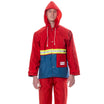
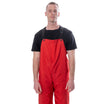
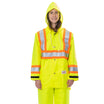
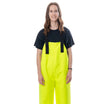
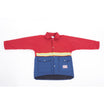
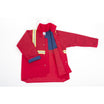

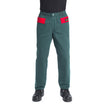
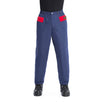
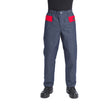
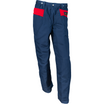
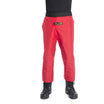
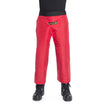
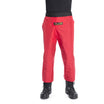
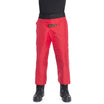

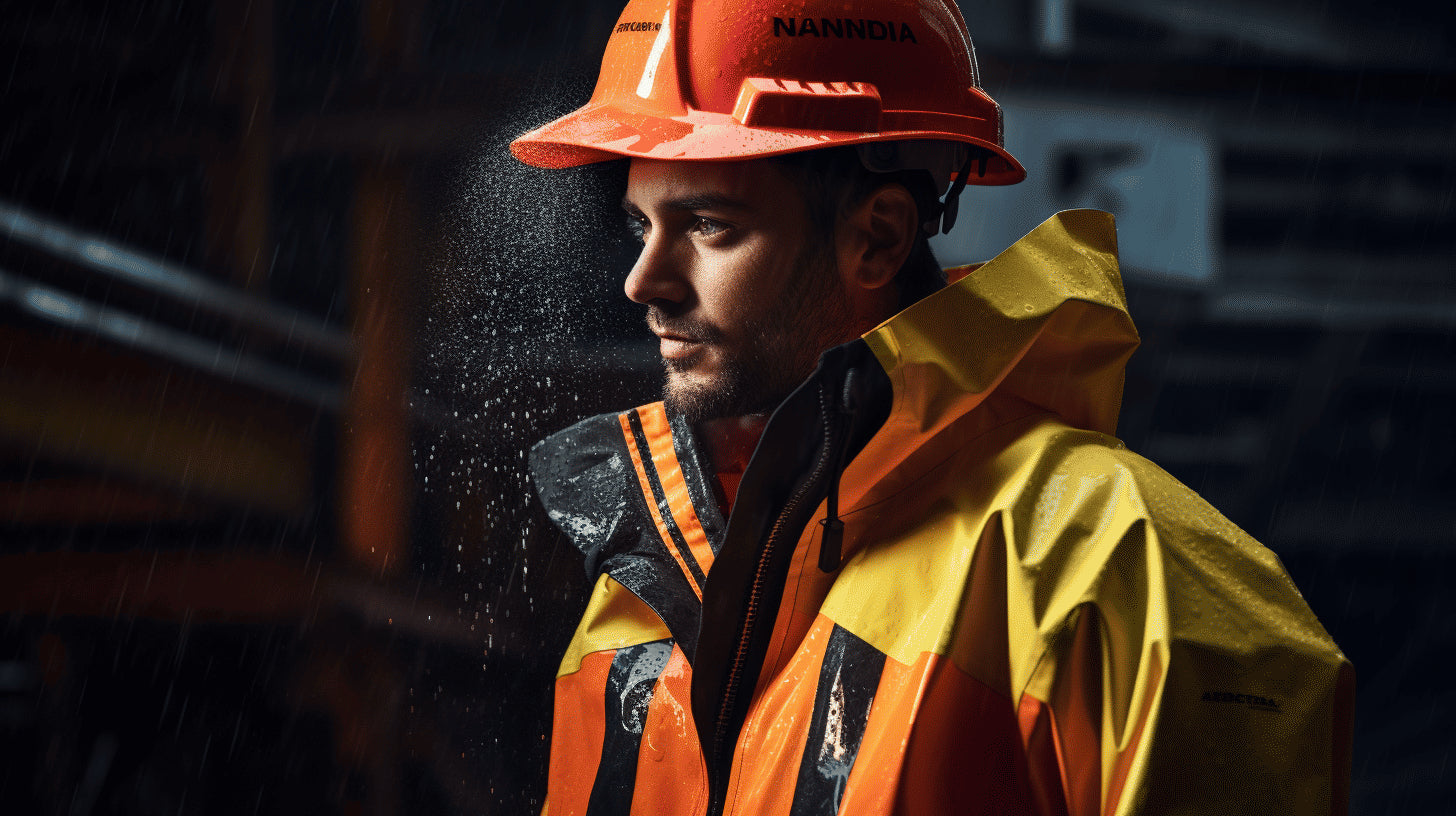
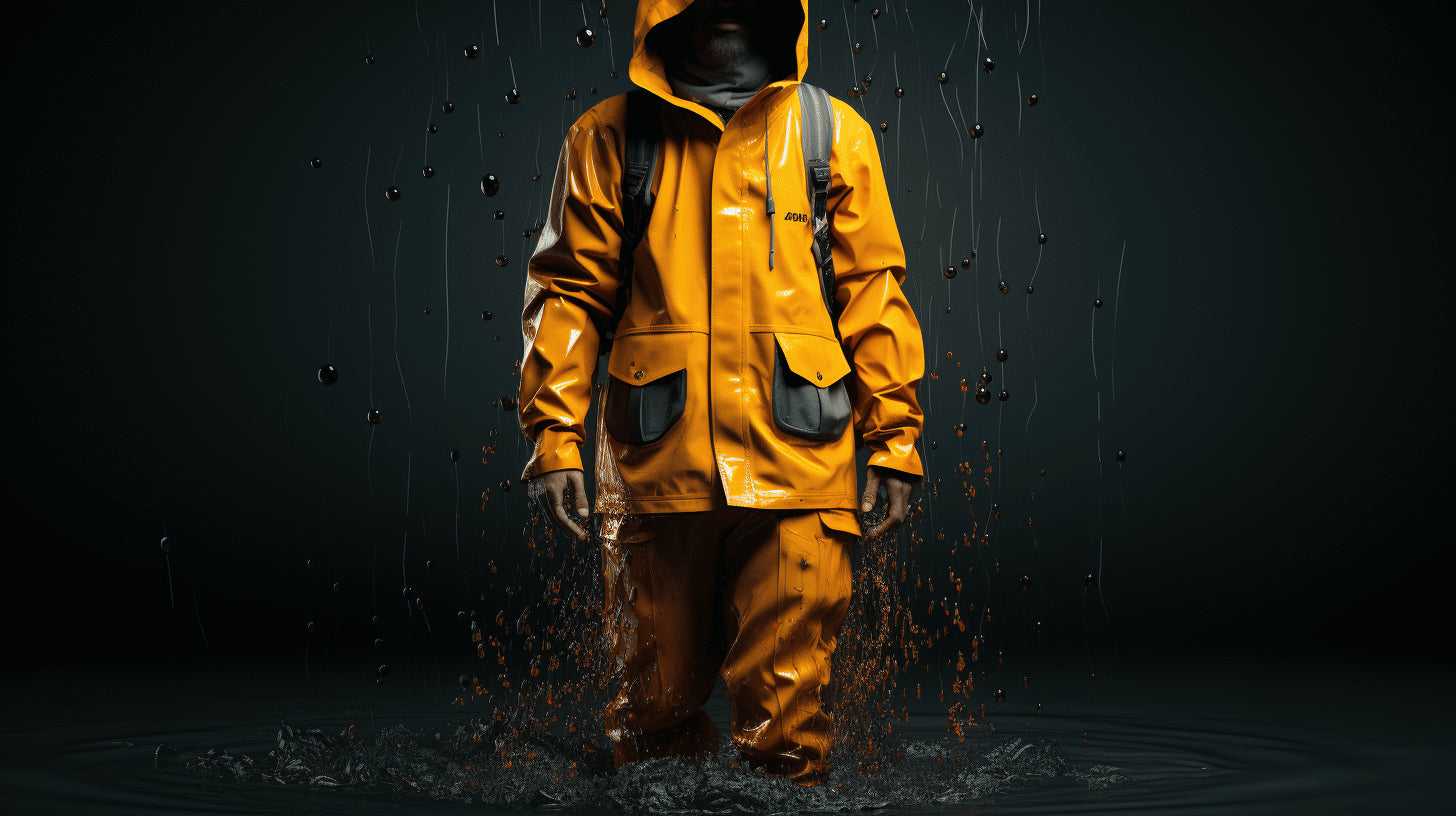
Leave a comment
This site is protected by hCaptcha and the hCaptcha Privacy Policy and Terms of Service apply.